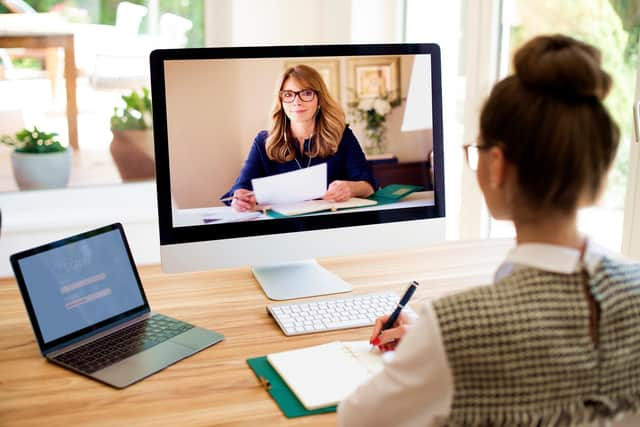Reimagine your office space to tempt staff to return - Claire Harkins
While many companies saw a surge in employees coming back to their offices, some faced challenges convincing portions of their workforce who had become accustomed to working from home.
A recent report from Colliers found that 69 per cent of employers are mandating at least three days in the office – and 14 per cent are mandating five. This is not always the best way to go about it, as employees who desire more flexibility may look elsewhere if compelled to come to the office.
Advertisement
Hide AdAdvertisement
Hide AdIt’s much better to try and strike a balance between mandating days and making the office a desirable place to be.


To help overcome any resistance, businesses should be seeking to create working environments that are not just safe and welcoming, but also practical, efficient and manageable in a time of hybrid working. The time has come for a reimagining of space that makes it fit for the new working era.
There are many forms this can take. Some will abandon one-to-one desking setups in favour of a reduced capacity, while others may change layouts to accommodate more collaboration and social spaces.
Companies may also pursue the creation of a sustainable furniture management strategy based on boosting the employee experience and minimising environmental footprints. For example, a heightened focus on collaboration and wellbeing spaces may render some current furniture obsolete. Refurbishing, recycling or donating to local charitable organisations helps to avoid waste, reduce costs and have a positive environmental impact.
Indeed, there are numerous activities that businesses are undertaking, but how can they be carried out while persuading people to come back to the office at the same time?


No matter how organisations approach the transformation of their workspaces, an effective communication strategy will be critical if such strategies are to pay off.
This should start by identifying all stakeholders involved, which stretches far beyond employees and business heads. Interested parties also include external contractors, suppliers, visitors and landlords, each of these having differing communication needs.
Business leaders, for example, should be the driving force behind messaging relating to the new workplace, including any required behavioural changes and rules. Landlords, meanwhile, will need to be informed of any changes impacting how the spaces in their building are used.
Advertisement
Hide AdAdvertisement
Hide AdStakeholders themselves, especially employees, should be part of the change management process. This can come in the form of surveys to gauge the opinions and concerns of staff when presented with your workplace plans and will ensure any subsequent tweaks are relevant and informed. If carried out before plans for the return to work are drawn, surveys can help ensure you get it right first time.
The communications themselves also need to be carefully thought out. Think about which channels your employees are most responsive to and what timing, tone and calls to action will be needed to ensure effective two-way engagement. A mix of written and verbal, general and personal communication is likely to be needed.
It is one challenge to attract employees back into the office after more than two years of remote working – it is another altogether to make the change a lasting one.
This is why it is critical to maintain communication well beyond the initial implementation. Post-occupancy surveys can be used to understand what has worked well and what areas need improving, while communications should be refreshed regularly for continued buy-in and engagement.
Claire Harkins, regional manager for Scotland, Business Moves Group (BMG)
Comments
Want to join the conversation? Please or to comment on this article.